Types of Otters: 12 Species with Unique Characteristics
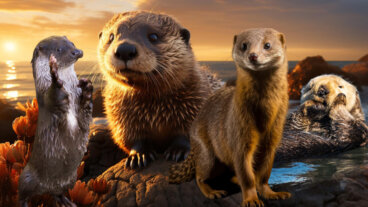
Otters are a group of semi-aquatic mammals found on all continents of the planet, with the exception of Oceania and Antarctica. They belong to the mustelid family, which are carnivorous animals characterized by both swimming and terrestrial capabilities. Currently, up to 12 types of otters are recognized, all of which have unique characteristics adapted to their place of origin. In this article, we’ll explore the habitat, feeding, reproduction, and wildlife behavior of these species.
Get ready to learn all about them!
All about the different types of otters
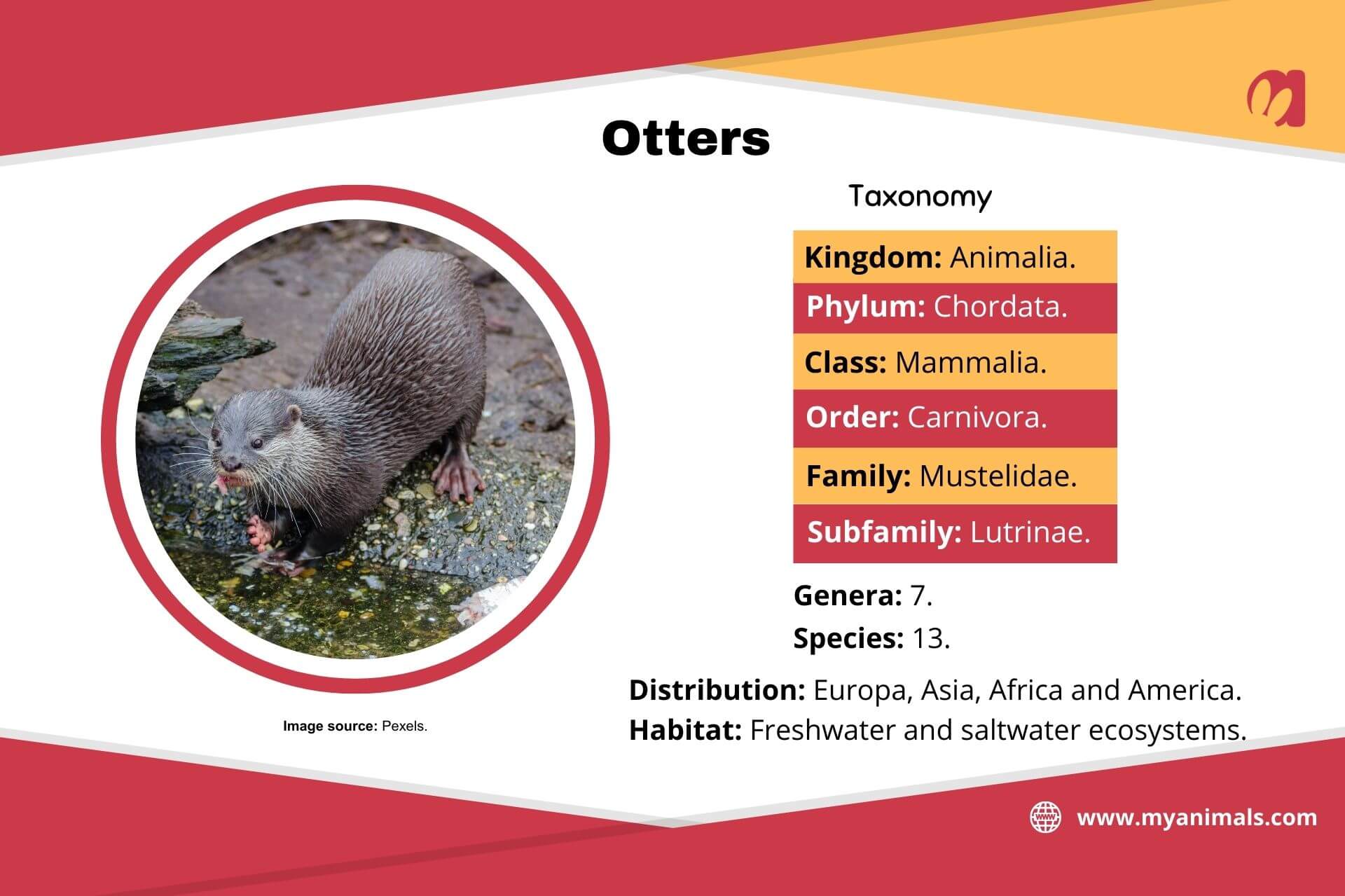
According to Catalogue of Life, there are 8 genera, 12 species, and 31 subspecies of otters. In general terms, the morphology of the different types of otters is very similar. They all have an elongated body, a small head, a long tail, and a thick waterproof coat that allows them to retain their body heat even when wet.
The different types of otters also stand out for their swimming abilities, as, thanks to their powerful tails and webbed feet, they can reach speeds of up to 7.5 miles per hour underwater. According to the book Otters: Ecology, Behaviour and Conservation, otters can inhabit both freshwater and saltwater ecosystems and are distributed around the world as follows:
Europe
- Eurasian otter (Lutra lutra)
North America
- North American river otter (Lontra canadensis)
- Sea otter (Enhydra lutris)
Latin America
- Giant otter (Pteronura brasiliensis)
- Neotropical otter (Lontra longicaudis)
- Southern river otter (Lontra provocax)
- Cat otter (Lontra felina)
Asia
- Hairy-nosed otter (Lutra sumatrana)
- Smooth-coated otter (Lutrogale perspicillata)
- Asian small-clawed otter (Aonyx cinereus)
Africa
- African clawless otter (Aonyx capensis)
- Spotted necked otter (Lutra maculicollis)
The characteristics of the different types of otters will be exposed below.
1. Eurasian otter (Lutra lutra)
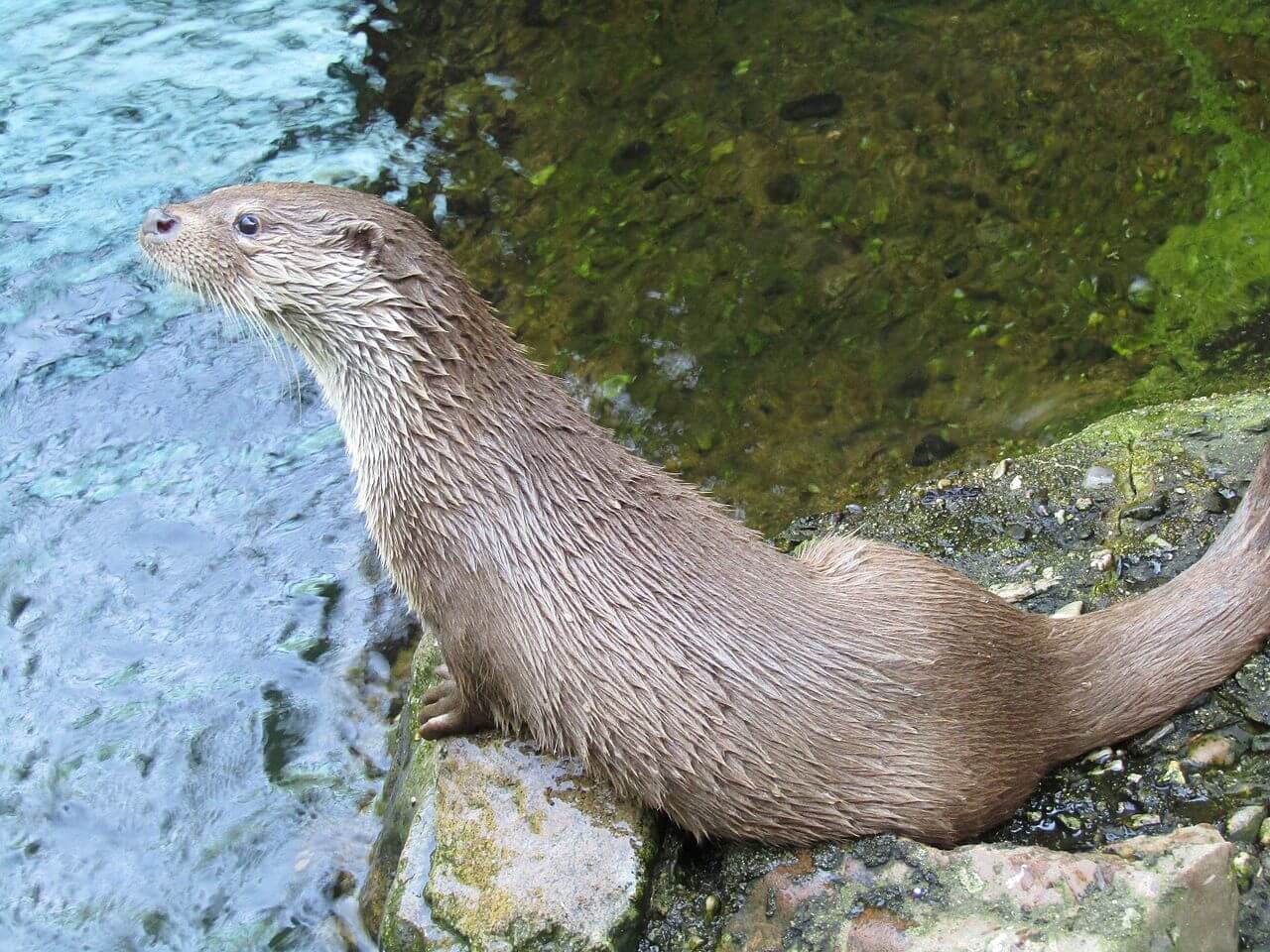
It can reach 31.5 inches in length and 17.5 pounds in weight as an adult. Its body is covered with brown fur that becomes lighter on the belly and a long thick tail that allows it to swim in deep waters. It’s distributed throughout the Eurasian region and North Africa, with a predilection for the following habitats:
- Rivers
- Lakes
- Streams
- Marshes
It should be noted that this species is solitary, although, in the mating and breeding seasons, males and females come together. Females have the capacity to reproduce throughout the year and give birth to between one and four young. Their life expectancy in the wild is between 14 to 16 years. Their diet is diverse:
- Fish
- Reptiles
- Insects
- Amphibians
- Crabs
- Water snakes
- Small mammals
2. North American river otter (Lontra canadensis)
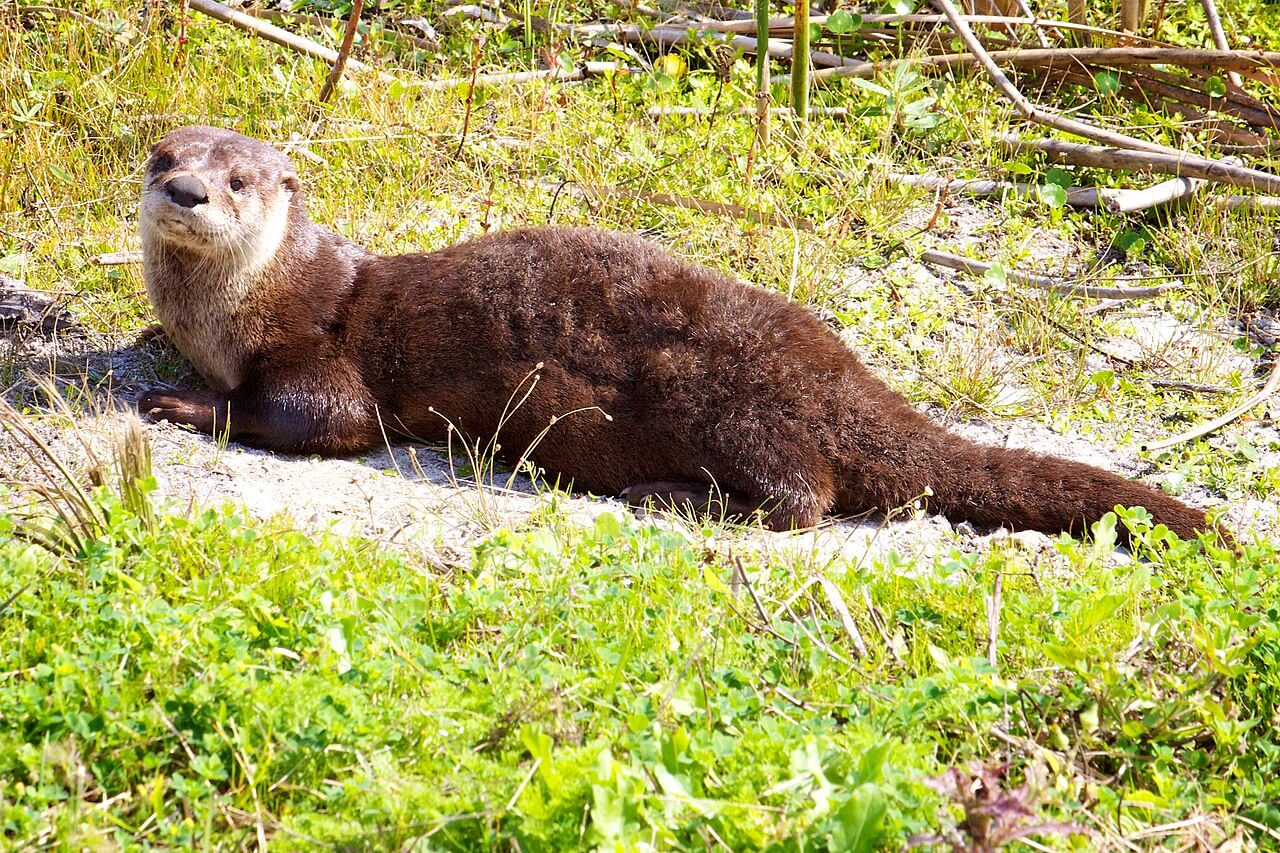
This otter is endemic to Canada and the United States. It’s very tolerant of climatic variations, with the capacity to withstand warm environments and low water temperatures. It’s found in both marine habitats and the following bodies of water:
- Rivers
- Lakes
- Marshes
Regarding their behavior, they can live alone or with their families, which are composed of their mates and offspring. They reproduce in late winter or early spring, and the litters are from one to six offspring. Their life expectancy is 8 to 9 years. The North American river otter feeds on the following organisms:
- Birds
- Fish
- Eggs
- Amphibians
- Turtles
- Crabs
- Some plants
- Small mammals
They can measure from 31.5 inches to 51 inches long. In addition, their weight varies between 11 and 31 pounds.
Sea otter (Enhydra lutris)
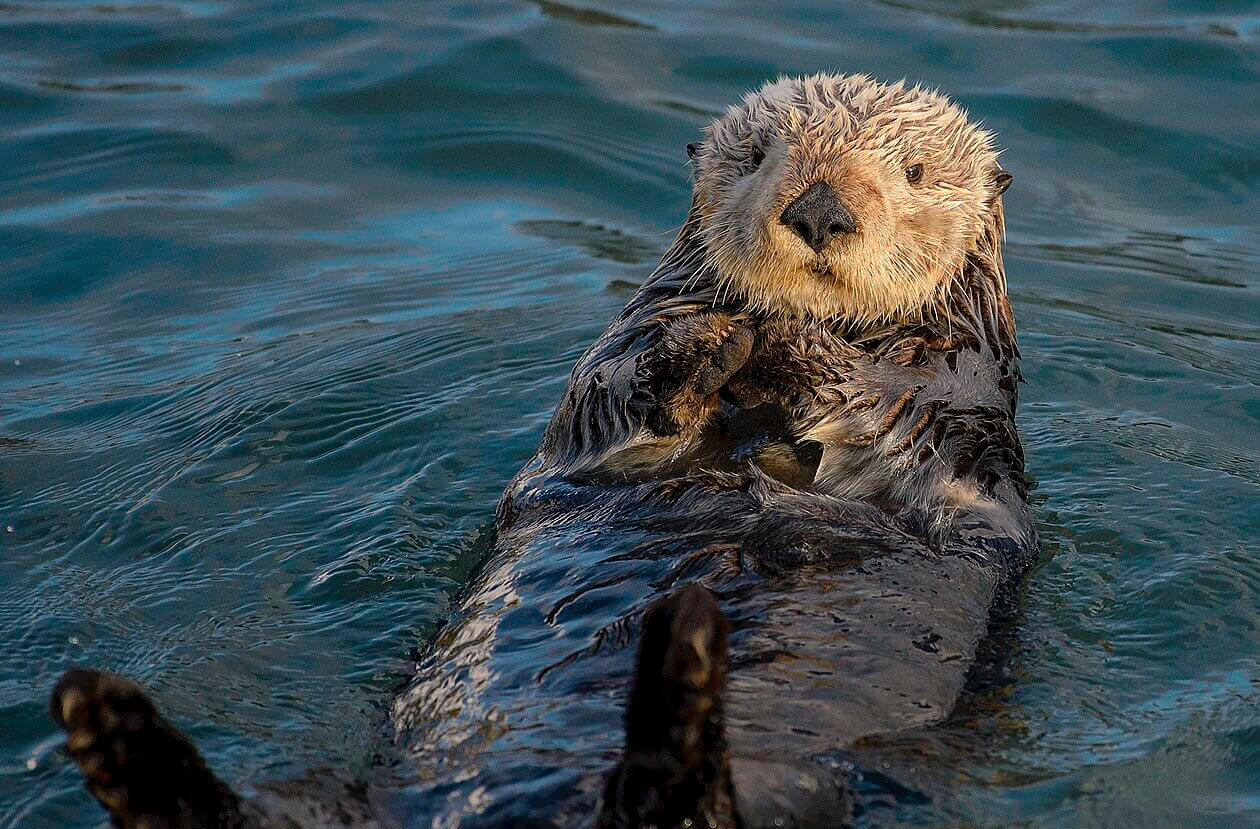
Unlike other types of otters, it has a denser coat that can be brown or reddish in color. This species is distributed in the Pacific Ocean at the following latitudes:
- Russia
- Alaska
- Canada
- Kuril Islands
- The central coast of California in the United States
In fact, the Animal Diversity Web of the University of Michigan states that it’s the mammal with the thickest fur in existence, as it’s composed of about 100,000 hairs on each centimeter of its body.
It’s considered one of the largest otters; as adults, it can weigh up to 66 pounds and measure between 3.3 and 5 feet in length.
Thanks to its physical characteristics, the sea otter has the ability to reach depths of up to about 150 feet. Its diet is based on the following marine animals:
- Octopuses
- Fish
- Snails
- Crabs
- Mussels
- Squid
- Sea urchins
- Starfish
Among other things, according to a study in the journal Scientific Reports, this otter is the only known marine mammal that uses tools to open hard-shelled food. To do so, it places prey, such as mussels, on its chests and beats them with stones until it splits them open.
Similarly, the Enhydra lutris is a gregarious, polygamous animal with the capacity to reproduce throughout the year. It has litters of one to two young, and its life expectancy in the wild is 20 years.
4. Giant otter (Pteronura brasiliensis)
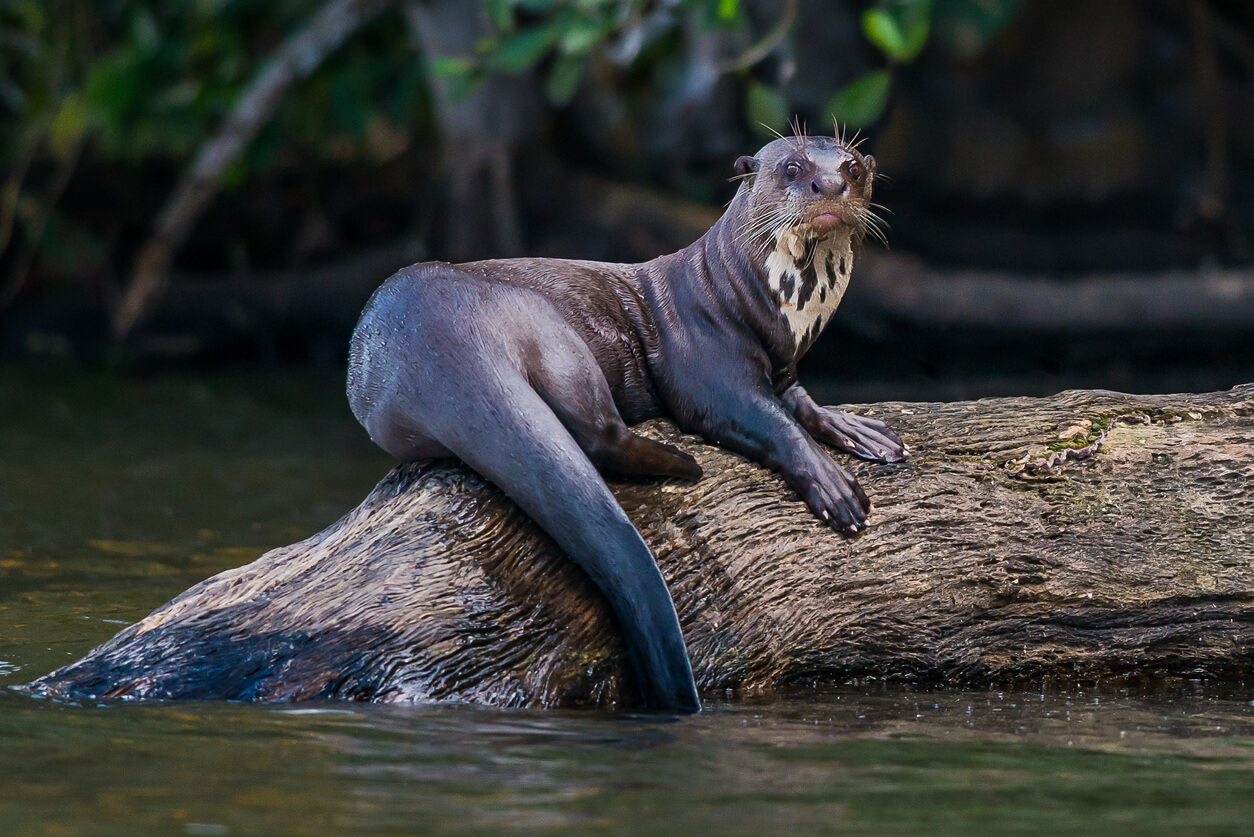
As its name suggests, it’s the largest otter of all. Regarding its morphology, in adulthood, it can measure up to 6.5 feet long and exceed 66 pounds in weight. Its fur is dark brown with a pattern of yellow spots on the neck, which is unique to each individual.
It’s distributed among several regions of South America, such as Bolivia, Brazil, Colombia, and Ecuador, and inhabits the following ecosystems:
- Rivers
- Lakes
- Streams
- Swamps
In contrast to other types of otters, this is a species characterized by being very social and living in groups of several specimens. It has the ability to reproduce throughout the year, although the peaks occur in late spring and early summer. These animals give birth to between one and five young per litter, and their life expectancy is 12 years. They feed on the following organisms:
- Fish
- Crustaceans
- Young anacondas
- Small caimans
5. Neotropical otter (Lontra longicaudis)

The Lontra longicaudis is present in northwestern Mexico and some South American countries such as the following:
- Brazil
- Uruguay
- Argentina
- Colombia
It inhabits freshwater ecosystems, where it creates burrows near lakes or streams. It usually measures between 12 and 24 inches and weighs about 26.5 pounds in adulthood. Its fur is dark brown. Like its relatives, its diet is varied and includes the following:
- Fish
- Reptiles
- Insects
- Mollusks
- Crustaceans
- Small birds and mammals
Lontra longicaudis is a solitary species that only stays with its mate for one day during the breeding season. It mates throughout the year and gives birth to litters of between one to five young.
6. Southern river otter (Lontra provocax)
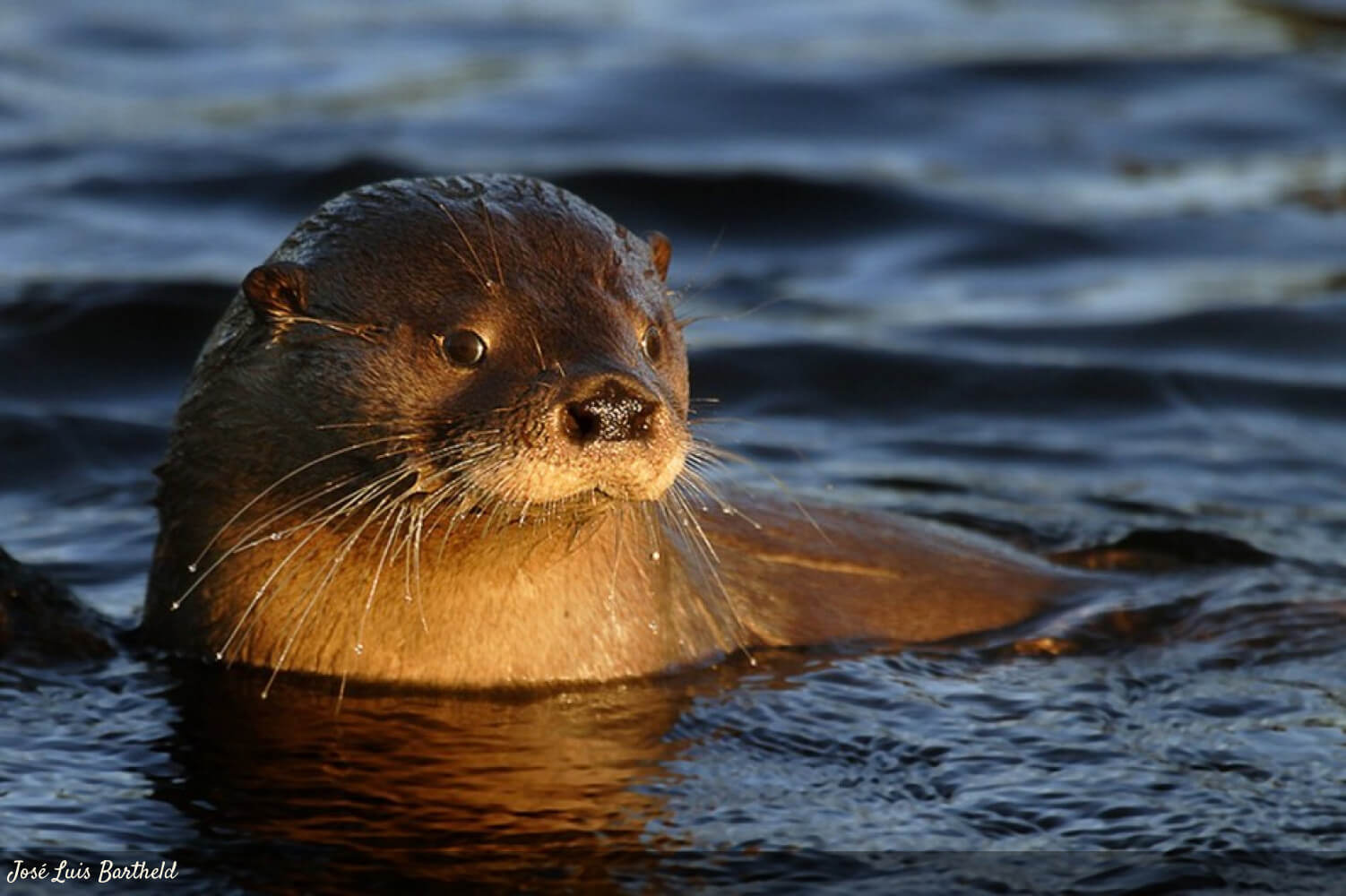
Lontra provocax can only be found in Chile and Argentina. It inhabits both marine and fresh waters, near rocky coasts or in environments with dense vegetation. It’s of medium size: It can reach up to 3.3 feet in length and 44 pounds as an adult. Its fur is dark brown on the back, which contrasts with its whitish belly.
There’s an important distinction in relation to its diet: It varies according to the region where it’s found. For example, those in Chile base 70% of their diet on fish. As for those in Argentina, 99% of their diet is made up of crustaceans. This is stated by the Animal Diversity Web of the University of Michigan.
At the same time, they can live alone or live in families composed of pairs and their offspring. Reproduction occurs between the winter and spring months, with one to four offspring per litter. According to the aforementioned website, life expectancy in the wild is only 3 years, and only 1% of the population reaches 10 years of age.
7. Cat otter (Lontra felina)
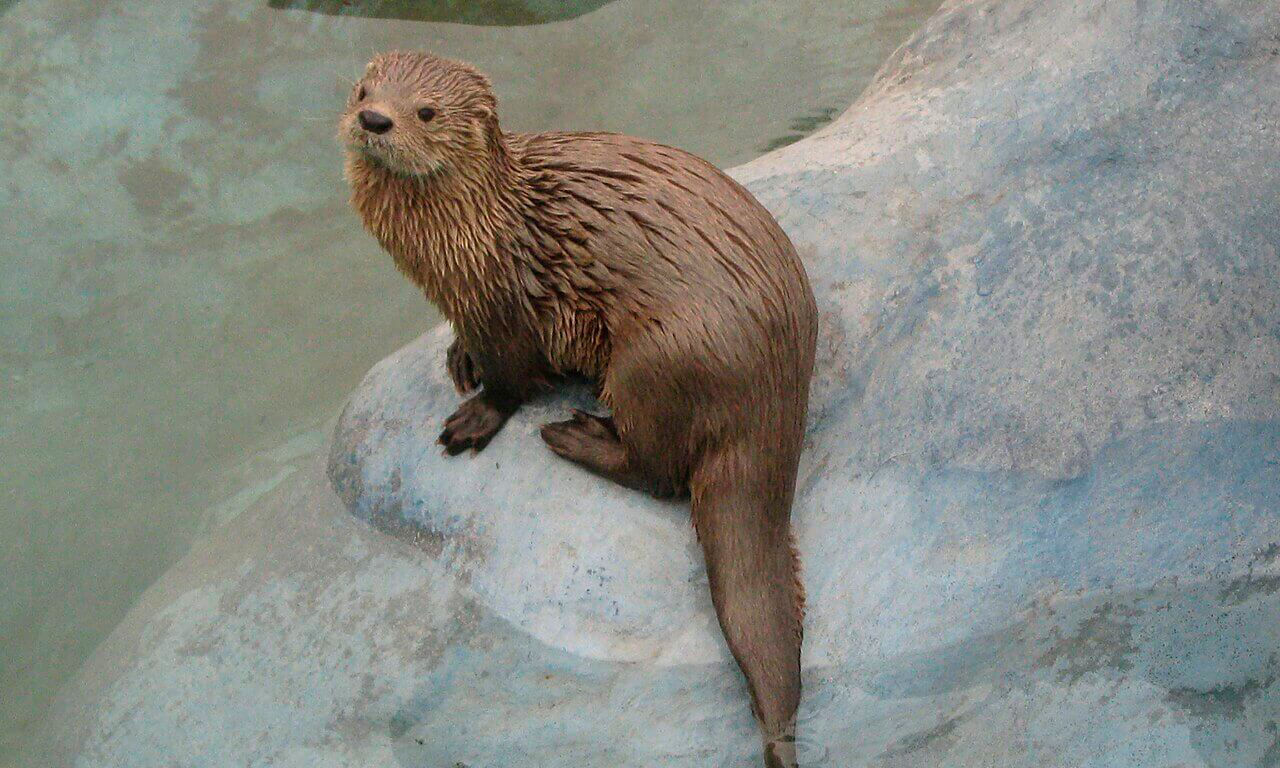
This otter is known as the smallest and most distinct species of all types of otters. In fact, it’s the only one that lives exclusively in marine ecosystems. It’s found along the Pacific coast from northern Peru to southern Chile. Its body is only about 35 inches long and weighs approximately 9 pounds. Its diet is made up of the following components:
- Fish
- Crustaceans
- Small mollusks
- Birds, mammals, and fruits (sometimes)
The coat is dark brown on the back and a little lighter on the belly.
Lontra felina is characterized as being a solitary species and is only found in company during the mating season. It reproduces in December and January and usually has two to four offspring per period.
8. Hairy-nosed otter (Lutra sumatrana)
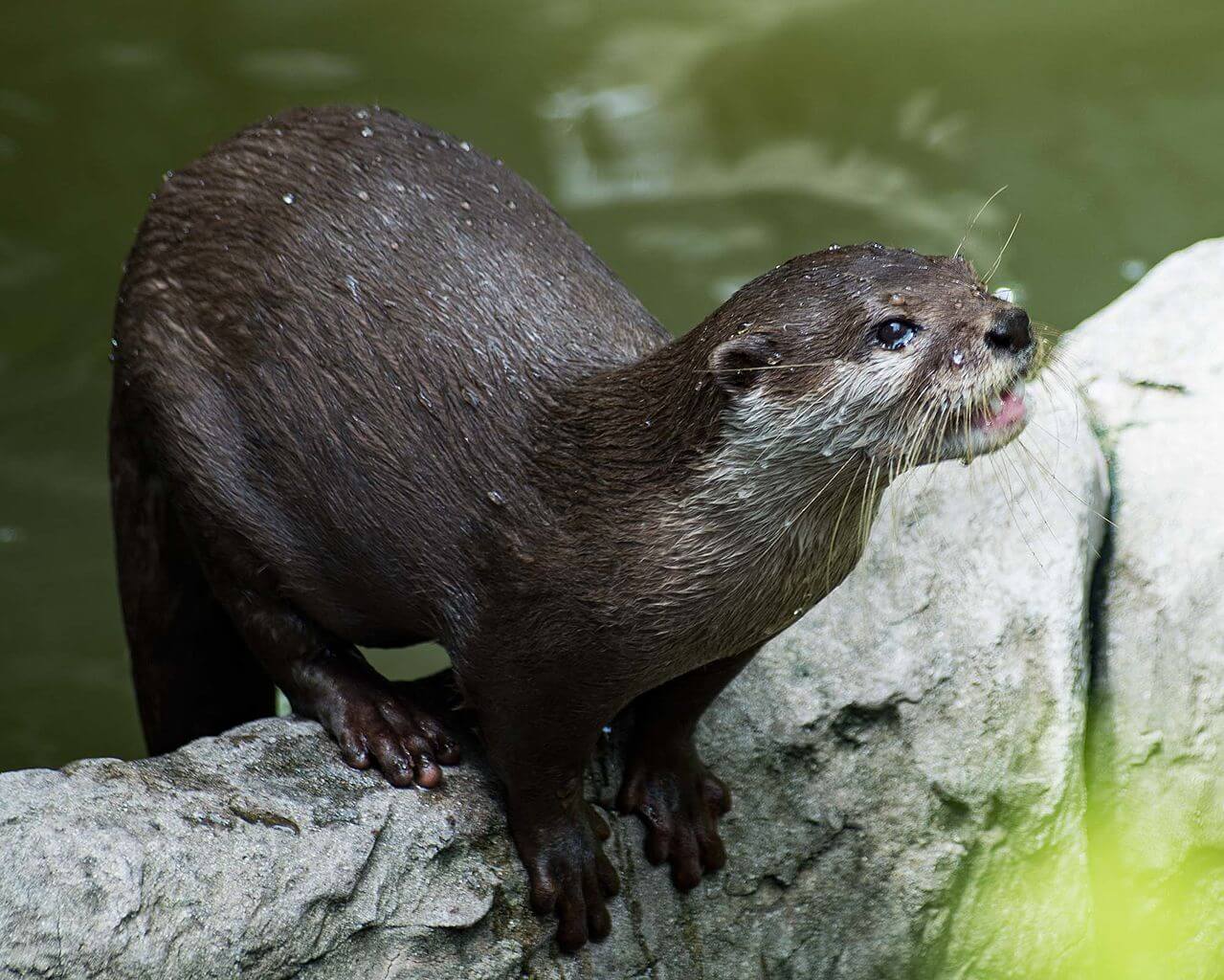
Its common name is due to its hairy nose pad, which distinguishes it from its relatives. It can also be identified by its white upper lip. The length of its head and body ranges from 24 to 31 inches, plus its tail is about 14 to 20 centimeters, while its weight is 15.5 to 17.5 pounds.
This mammal lives in Southeast Asia in several countries:
- Malaysia
- Vietnam
- Thailand
- Cambodia
- Indonesia
Its physical characteristics and distribution aren’t the only remarkable aspects of this marine mammal. The fact is that this otter was declared extinct in 1998 after an individual of this species was run over in Borneo, until its reappearance was reported in 2010 after being captured by camera traps.
However, the Lutra sumatrana is listed as an “endangered species” on the red list of the International Union for Conservation of Nature (IUCN). The main threats to its survival are the following:
- Deforestation
- Aquaculture
- Hunting and trapping
- The development of urban areas
The hairy-nosed otter feeds on fish, although it can also include frogs, crustaceans, and even lizards.
9. The smooth-haired otter (Lutrogale perspicillata)
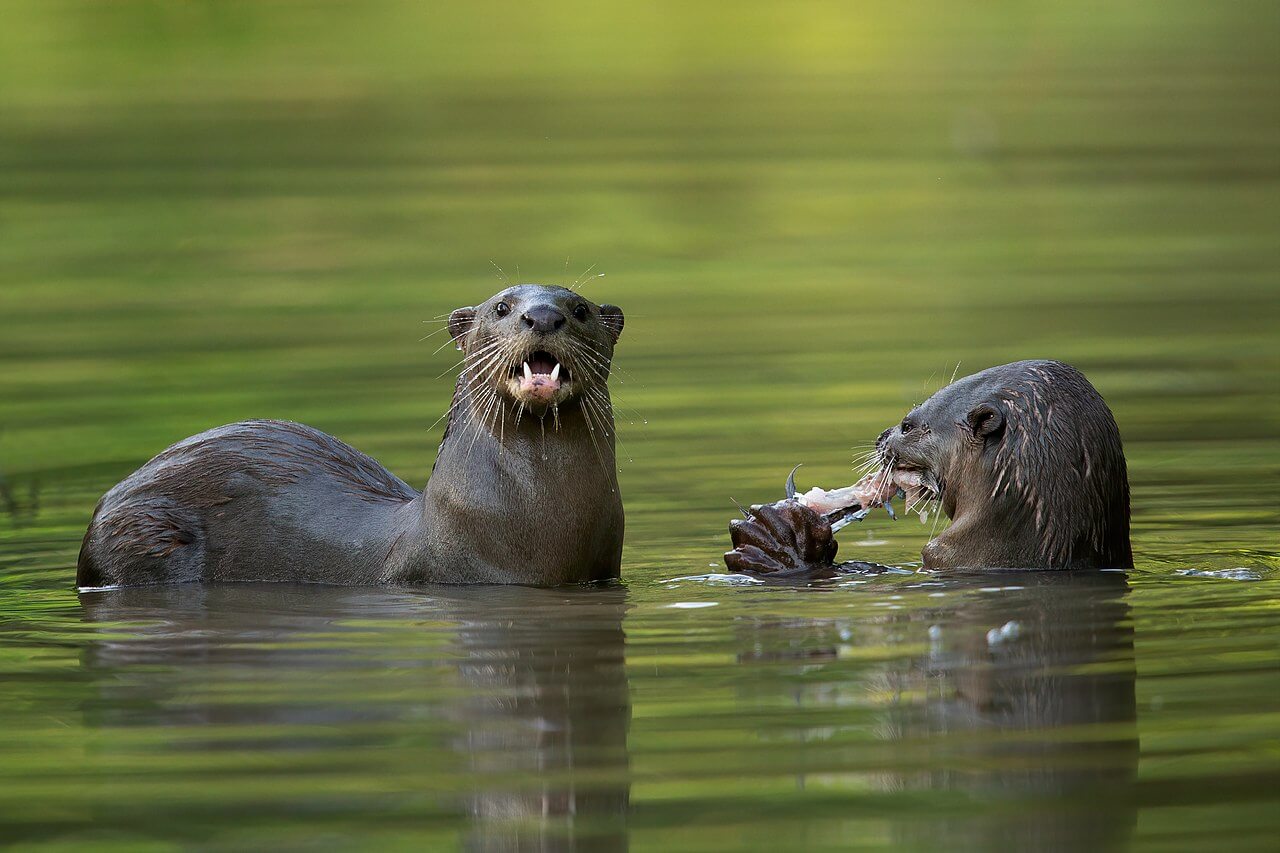
According to the Animal Diversity Web, the smooth-coated otter is the largest otter in Southeast Asia. Its weight ranges from 15.5 to 24 pounds, while its length can reach up to 4.3 feet. In this regard, sexual dimorphism should be considered, as males are larger than females.
The species Lutrogale perspicillata owes its common name to its short, smooth, velvety-looking fur, which distinguishes it from its relatives. In addition, it has short hairs that measure between 6 and 8 millimeters under its coat and longer hairs measuring between 12 and 14 mm. Its function is to repel water.
Likewise, smooth-coated otters can be distinguished by their rounded heads, pronounced noses in the shape of an inverted V, and flattened tails.
In countries such as India, Nepal, and Malaysia, this mammal can be found in various habitats:
- Rivers
- Canals
- Swamps
- Mangroves
- Wetlands
These otters, which are monogamous and omnivorous, are considered a “vulnerable species” due to wetland destruction, pollution, and poaching.
10. Small-clawed otter (Aonyx cinereus)
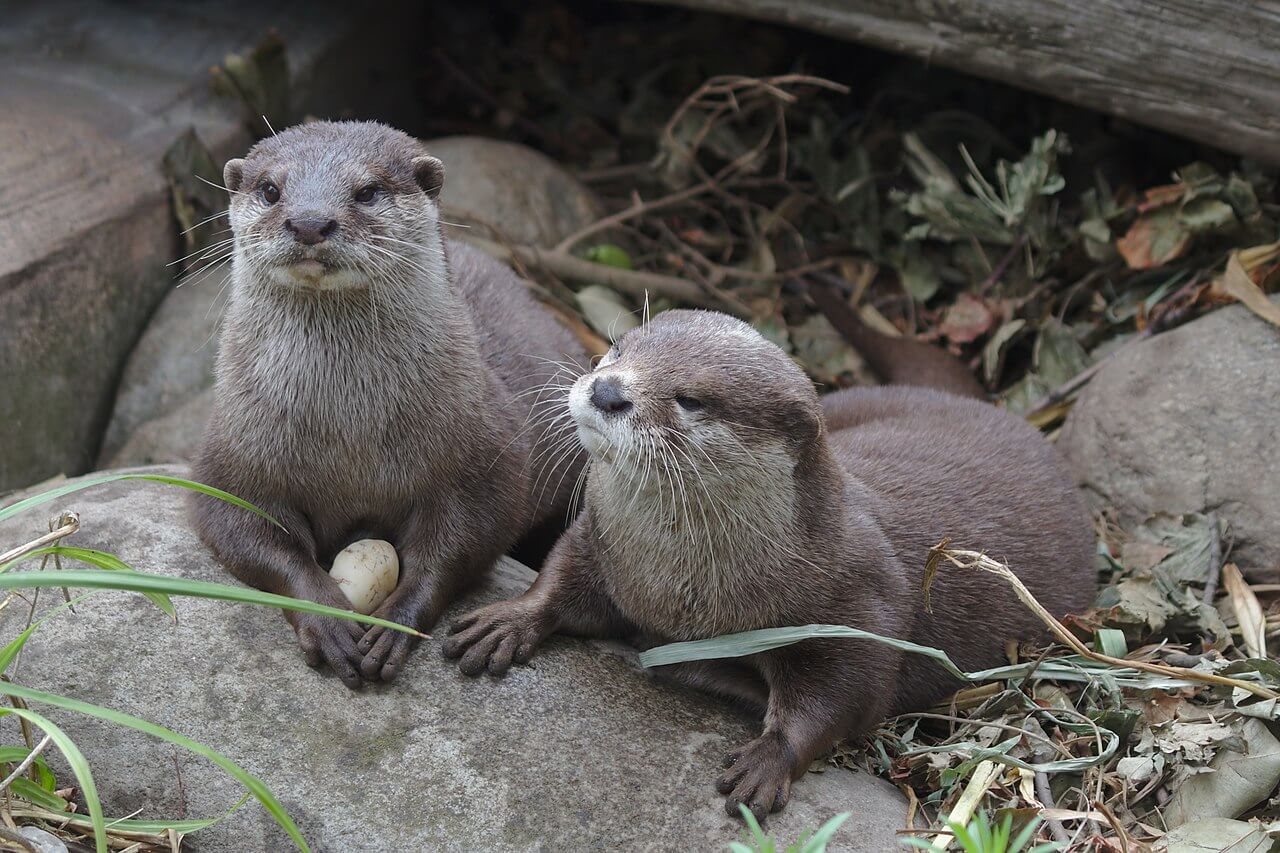
This species inhabits freshwater streams and rivers, ranging from southern India to the Malay Peninsula and southern China. It exhibits dark fur on much of its body that’s grayish brown, except for the face and neck, which are cream-colored.
This mammal is named for its small claws that don’t usually extend beyond its toes. The weight of the Aonyx cinereus ranges from 6 to 12 pounds for both sexes. Like their relatives, they form monogamous pairs and live in groups of about twelve individuals.
These otters use their front legs to find and catch prey, unlike others that use their mouths.
The Aonyx cinereus is also in the “vulnerable” category due to urban development, hunting, and deforestation.
11. Clawless otter (Aonyx capensis)
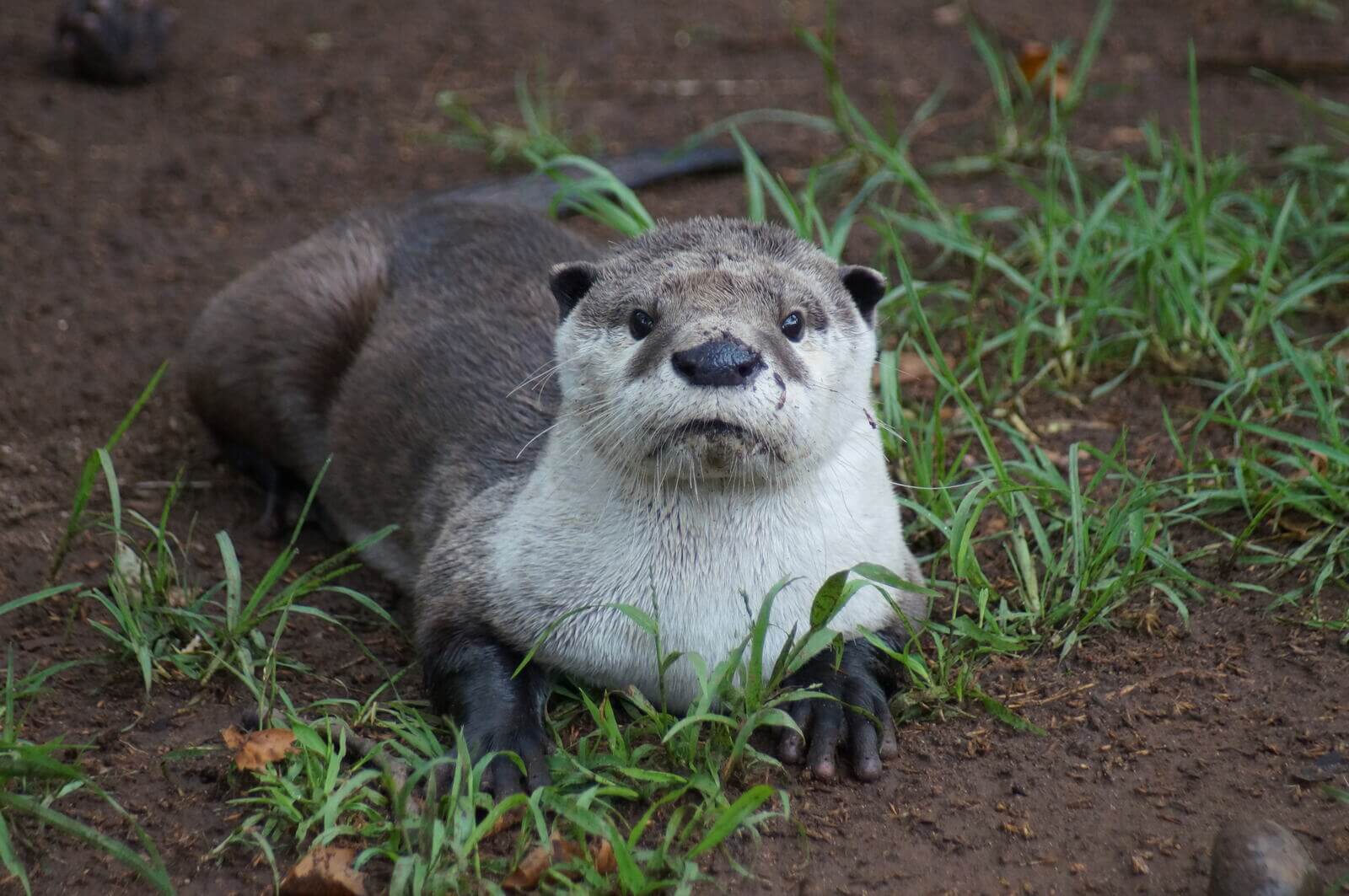
The clawless otter is found throughout much of Africa, from the coast of South Africa to Ethiopia and even extending as far as Senegal. In these areas, they inhabit springs and rivers, where they dive down to depths of around 5 feet.
The Aonyx capensis is the third largest of all otter species.
In this species, where the male is larger than the female, the weight ranges from 22 to 48.5 pounds, and its body measures between 29.5 to 34.5 inches from head to body. The tail length ranges from 18 to 20 centimeters. In addition, the African clawless otter has whiskers on its eyebrows, chin, and cheeks, which are white and are used to find prey.
Its coat has outer hairs and an undercoat. Its coat is dark brown, except for the following parts of the body:
- Neck
- Belly
- Throat
- The sides of the face
- Lower ears
- Upper lips
This African otter is listed as “Least Concern” on the IUCN Red List, although its population is still subject to the same threats as other types of otters, including habitat destruction and hunting.
12. Spotted-necked otter (Hydrictis maculicollis)

The spotted-necked otter is found in central Africa. Lakes Victoria and Tanganyika are two bodies of water where they are found in abundance. They can also be seen in other parts of sub-Saharan Africa.
The Hydrictis maculicollis is distinguished by brown and white spots on its throat and underside. On the other parts of its body, it exhibits a brown that can range from reddish to chocolate. In addition to its coloration, other physical features that distinguish it are the following:
- Long claws
- Long tails
- Long, webbed toes
Regarding its dimensions, this otter presents sexual dimorphism, as females are less corpulent than males. The average weight of the species is 8.8 pounds, and its length varies between 33.5 and 44 inches.
According to data from the Animal Diversity Web, it’s a solitary mammal; however, it may group together at certain times of the year.
Although Hydrictis maculicollis is classified in the “least concern” category, its population continues to decline. Among the main threats it faces are habitat loss and human activities.
Otters: AQnimals at risk of extinction
Otters are animals with fascinating characteristics that have allowed them to reach almost every territory on the planet. However, due to indiscriminate hunting, environmental pollution, and the transmission of some diseases by other animals, such as canine distemper, the population of some of these species has been severely affected in recent years.
As a result, the International Union for Conservation of Nature (IUCN) warns that the sea otter is “in danger” of extinction. Its population is estimated at around 150,000, according to an article in the journal Frontiers in Marine Science.
In view of this, the efforts of different organizations and governmental bodies will be necessary for their conservation in the wild. It’s fundamental to remember that all the different types of otters play a fundamental role in the ecosystems they inhabit, and their extinction could cause serious problems for the planet.
All cited sources were thoroughly reviewed by our team to ensure their quality, reliability, currency, and validity. The bibliography of this article was considered reliable and of academic or scientific accuracy.
- Allegra, J., Rath, R., & Gunderson, A. (s. f.). Enhydra lutris- Sea otter. Animal Diversity Web. Consultado el 2 de julio de 2023. https://animaldiversity.org/accounts/Enhydra_lutris/
- Bender, J. (s. f.). Pteronura brasiliensis- Giant Otter. Animal Diversity Web. Consultado el 2 de julio de 2023. https://animaldiversity.org/accounts/Pteronura_brasiliensis/
- Berry, K. (s. f.). Lontra longicaudis- Neotropical River Otter. Animal Diversity Web. Consultado el 2 de julio de 2023. https://animaldiversity.org/accounts/Lontra_longicaudis/
- Catalogue of Life. (s.f.). Lutrinae Bonaparte, 1838. Consultado el 24 de noviembre de 2023. https://www.catalogueoflife.org/data/taxon/628LJ
- David, W, R., Bodkin, J, L., Coletti, H, A., Monson, D, H., Larson, S, E., Carswell, L, P., & Nichol, L, M. (2019). Future Directions in Sea Otter Research and Management. Frontiers in Marine Science, 510. https://www.frontiersin.org/articles/10.3389/fmars.2018.00510/full
- Dewey, T., & Ellis, E. J. (s.f.). Lontra canadensis- Northern River Otter. Animal Diversity Web. Consultado el 2 de julio de 2023. https://animaldiversity.org/accounts/Lontra_canadensis/
- Doroff, A., Burdin, A. & Larson, S. (2022). Sea Otter. Unión Internacional para la Conservación de la Naturaleza (IUCN). https://www.iucnredlist.org/species/7750/219377647
- Haase, W. (s. f.). Lontra provocax- Southern River Otter. Animal Diversity Web. Consultado el 2 de julio de 2023. https://animaldiversity.org/accounts/Lontra_provocax/
- Hance, J. Endangered otter rediscovered in Borneo. Mongabay. Consultado el 24 de noviembre de 2023. https://news.mongabay.com/2010/07/endangered-otter-rediscovered-in-borneo/
- Haslam, M., Fujii, J., Espinosa, S., Mayer, K., Ralls, K., Tinker, M. T., & Uomini, N. (2019). Wild sea otter mussel pounding leaves archaeological traces. Scientific Reports, 9(1), 4417. https://www.ncbi.nlm.nih.gov/pmc/articles/PMC6418163/
- Khoo, M., Basak, S., Sivasothi, N., de Silva, P.K. & Reza Lubis, I. (2021). Lutrogale perspicillata. The IUCN Red List of Threatened Species 2021: e.T12427A164579961. Consultado el 24 de noviembre de 2023. https://dx.doi.org/10.2305/IUCN.UK.2021-3.RLTS.T12427A164579961.en
- Kruuk, H. (2006). Otters: ecology, behaviour and conservation. Oxford University Press. https://books.google.com.co/books?hl=es&lr=&id=Q4ASDAAAQBAJ&oi=fnd&pg=PR9&dq=otters+species&ots=2AP0LBIpk2&sig=J9Olamn2XoAUBOHPi5YlF14ocoQ#v=onepage&q=otters%20species&f=false
- Ministerio para la Transición Ecológica y el Reto Demográfico de España. (s. f.). Inventario Español de Especies Terrestres: Lutra lutra. Consultado el 2 de julio de 2023. https://www.miteco.gob.es/es/biodiversidad/temas/inventarios-nacionales/ieet_mami_lutra_lutra_tcm30-99817.pdf
- National Geographic. (s. f.). Otters. Consultado el 2 de julio de 2023. https://www.nationalgeographic.com/animals/mammals/facts/otters-1
- Ortiz R. M. (2001). Osmoregulation in marine mammals. The Journal of Experimental Biology, 204(11), 1831–1844. https://pubmed.ncbi.nlm.nih.gov/11441026/
- Sanders, C. W., 2nd, Pacifici, K., Hess, G. R., Olfenbuttel, C., & DePerno, C. S. (2020). Metal contamination of river otters in North Carolina. Environmental Monitoring and Assessment, 192(2), 146. https://link.springer.com/article/10.1007/s10661-020-8106-8
- Sasaki, H., Aadrean, A., Kanchanasaka, B., Reza Lubis, I. & Basak, S. (2021). Lutra sumatrana. The IUCN Red List of Threatened Species 2021: e.T12421A164579488. Consultado el 24 de noviembre de 2023. https://dx.doi.org/10.2305/IUCN.UK.2021-3.RLTS.T12421A164579488.en
- Savage, M. (s. f.). Lontra felina- Marine Otter. Animal Diversity Web. Consultado el 2 de julio de 2023. https://animaldiversity.org/accounts/Lontra_felina/
- Sistema de Información de Biodiversidad de la Administración de Parques Nacionales, Argentina. (s. f.). Lontra felina. SIB. Consultado el 21 de julio de 2023. https://sib.gob.ar/especies/lontra-felina
- Soderman, S. (s.f.). Hydrictis maculicollisspotted-necked otter. Animal Diversity Web. Consultado el 24 de noviembre de 2023. https://animaldiversity.org/accounts/Hydrictis_maculicollis/
- Thomas, N., White, C. L., Saliki, J., Schuler, K., Lynch, D., Nielsen, O., … & Knowles, S. (2020). Canine distemper virus in the sea otter (Enhydra lutris) population in Washington State, USA. Journal of Wildlife Diseases, 56(4), 873-883. https://meridian.allenpress.com/jwd/article/56/4/873/446481/CANINE-DISTEMPER-VIRUS-IN-THE-SEA-OTTER-ENHYDRA
- White, T. (s.f.). Lutrogale perspicillatasmooth-coated otter. Animal Diversity Web. Consultado el 24 de noviembre de 2023. https://animaldiversity.org/accounts/Lutrogale_perspicillata/
